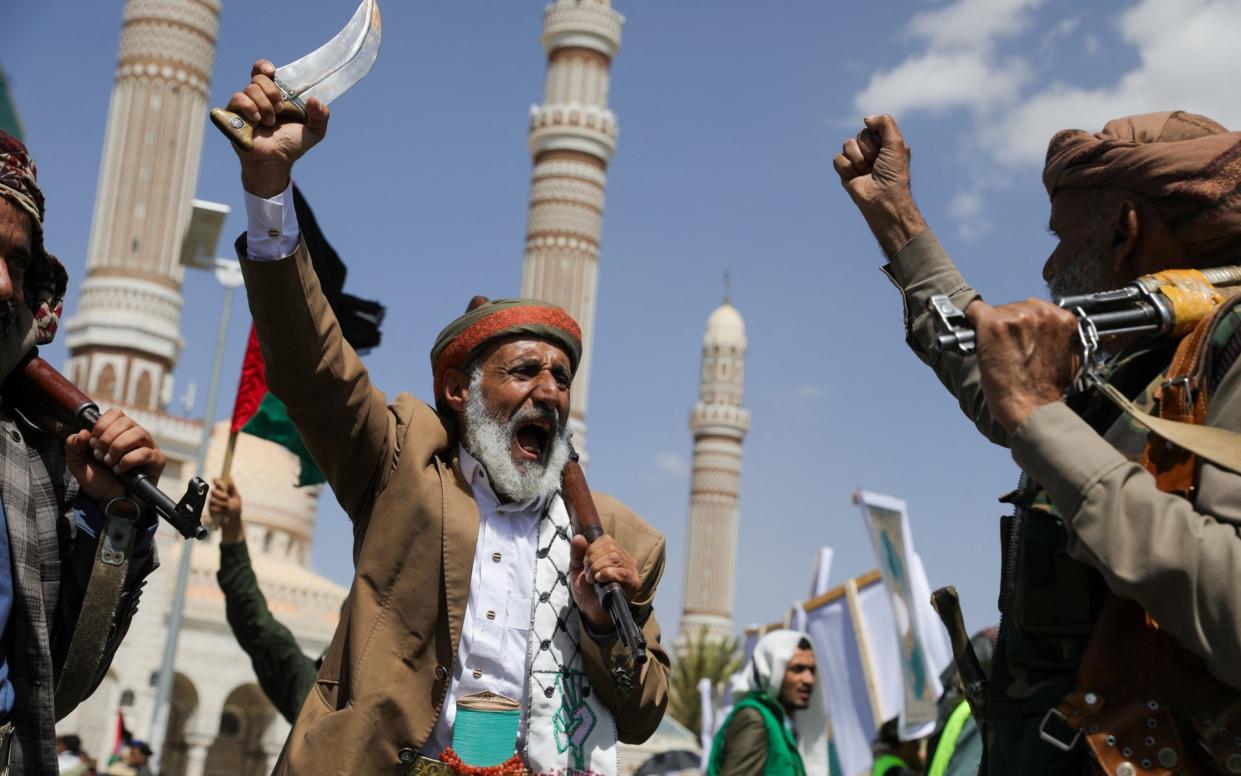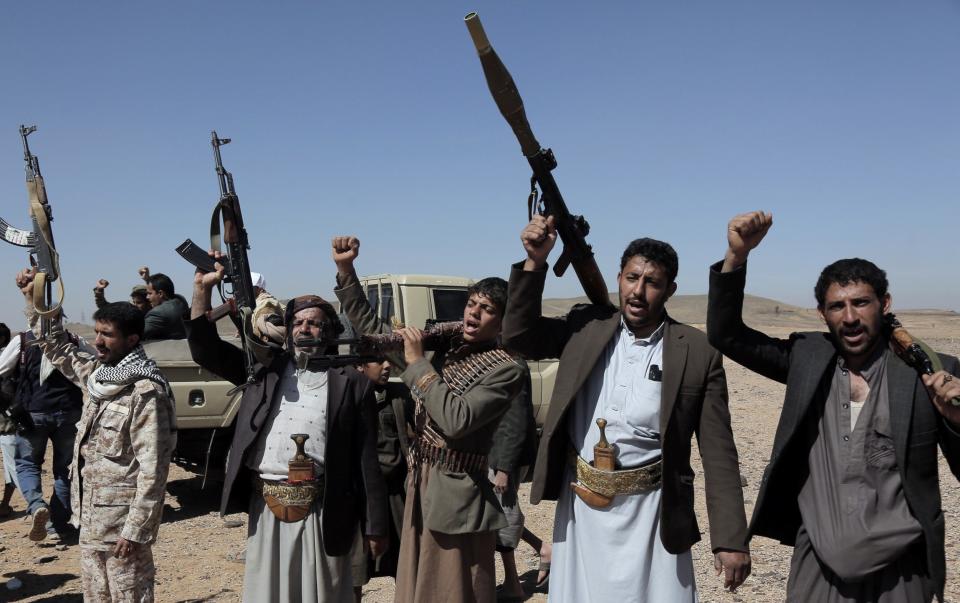Houthis team up with feared Al-Qaeda branch in new threat to Yemen

The Iran-backed Houthis in Yemen are working with a feared local branch of Al-Qaeda in a partnership that risks further destabilising the impoverished and conflict-torn country.
The Houthi are reported to be helping Al-Qaeda in the Arabian Peninsula (AQAP) by giving them drones and releasing key figures from jail.
Although the two terror groups come from very different branches of Islam – the Houthis are Shia and AQAP are Sunni – they appear to be coordinating to wrest back control of southern Yemen from the UAE-backed secessionist Southern Transitional Council (STC).
Washington once considered AQAP to be among the most dangerous branches of the global jihadist network after it carried out deadly attacks in the US, France, Yemen, and Saudi Arabia.
New danger amid Gaza tensions
Its activity appeared to have waned in recent years, but, experts say its apparent deepening cooperation with a terror group backed by Tehran risks creating new dangers at a time when the Middle East is already seeing soaring tensions over the war in Gaza.
Just this week, AQAP were blamed for a bomb that killed six troops loyal to the STC in southern Yemen, a sign of their growing activity in the country.
Although the exact nature of the unlikely partnership between AQAP and the Houthis remains unclear – including just how high up the ladder the cooperation goes – there has been clear evidence of collaboration.
The most significant came last May, when AQAP carried out seven drone attacks on a pro-STC group in the Shabwa governorate of southern Yemen.
“Given that AQAP has limited technical capability in developing their own drones, especially after the recent deaths of their explosives experts, external support for sourcing these weapons was probably crucial,” wrote Rueben Dass of the International Centre for Political Violence and Terrorism Research in Singapore in a post for Lawfare at the time.
Drone attack showed cooperation
“The drones were reportedly obtained by Abu Osama al-Diyani, a Yemeni jihadi leader close to [late AQAP leader Khalid] Batarfi who maintains a close relationship with the Houthis.”
Batarfi died earlier this year of unknown causes.
A spokesman for a coalition of forces fighting on behalf of the STC said the provision of drones was just the tip of the iceberg.
“The Houthis provided Al-Qaeda with logistics support, including thermal rockets, drones, reconnaissance equipment,” said Lt Col Mohammed Al-Naqib.
Just a few months earlier, the two groups traded prisoners, with the Houthis releasing jihadists Al-Qaqa al-Bihani and Muwahhid al-Baydhnani in exchange for two of their fighters.
On the ground, local residents say the two groups no longer engage in skirmishes with each other.
“Al-Qaeda militants run checkpoints in the road which links Shabwa with Al-Baydha province [in south-eastern Yemen] marked with their flag; a few kilometres down on the same road, the Houthis run checkpoints holding their flag,” said Mohammed, who declined to give his full name because of security concerns.
“They live in harmony,” he added. “They never clash and each group raises its banner, which clearly indicates a growing cooperation between the two groups.”
Terror groups ‘go into battle together’
Even more worryingly, the two groups appear to be going into battle together.
Abu Qusai Assana’ani, believed to be a high-ranking Houthi leader, was killed while fighting alongside Al-Qaeda militants in September 2022, according to Colonel Ali Al-Badah, chief of operations command in a pro-STC region.
“Many Houthi fighters escorting him were injured in the battle,” he said.
“We received prior information from our sources in Mukairas [that] confirmed Assana’ani was providing Al-Qaeda militants in Mudiyah district with food supplies, weapons and ammunition when our troops raided Wadi Omaran,” he said, referring to an Al-Qaeda stronghold in Yemen.
The aim appears to be to join forces to pressure the STC.

“It is clear there are shared interests between both groups amid the protracted civil war, mainly the elimination of southern secessionist ambitions,” said Fernand Carvajal, who previously served on the UN Security Council panel of experts of Yemen.
“Houthis aim to control all physical territory of the republic of Yemen, while AQAP continues to aim at establishing a safe haven in Yemen.
“Southern provinces offer the best terrain due to the unobstructed access to a large coastline and land corridors to north Yemen and Gulf states.”
The cooperation of the two groups also exposes international players, including the UK, which are protecting shipping interests in the Red Sea to fresh attacks, experts say.
The involvement of the US, Britain, and European countries in the maritime conflict near Yemen’s shores presents a “golden opportunity” for AQAP, said Ayad Qassem, a Yemen analyst and chairman of the South24 Centre for News and Studies.
It may start to broaden its armed operations and “capitalise on the Houthis’ need to counter Western pressures under the banner of confronting Israel”, he added.
“If the pressure on the Houthis continues, [AQAP] may resort to carrying out operations in international waters or using the same tactics as its previous cross-border attacks.”

 Yahoo News
Yahoo News 
